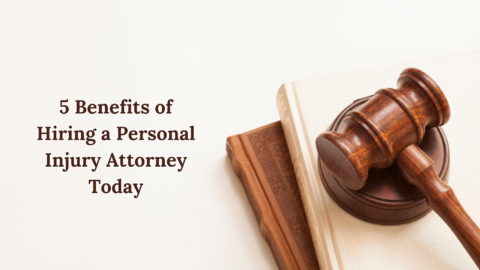When you’ve been injured due to someone else’s negligence, one of the first and most crucial steps in seeking compensation is crafting a demand letter. A well-written demand letter can significantly increase your chances of winning a personal injury claim by clearly presenting your case and persuading the at-fault party or their insurance company to settle in your favor. This article provides a comprehensive guide on how to write an effective demand letter for personal injury claims, ensuring that you cover all essential aspects to maximize your potential settlement.
Understanding the Importance of a Demand Letter
A demand letter is a formal written request to the at-fault party or their insurance company, detailing your injuries, medical treatments, and other related expenses. It serves several key purposes:
- Initiates Negotiation: The demand letter sets the stage for negotiations between you and the insurance company.
- Documents Your Claim: It provides a detailed account of your injuries and the impact on your life, serving as an official record.
- Persuades the Insurer: A well-crafted letter can convince the insurance company of the legitimacy and seriousness of your claim, potentially leading to a quicker and more favorable settlement.
Key Elements of an Effective Demand Letter
To write a compelling demand letter, it’s essential to include specific elements that clearly outline your case and support your claim. Here are the key components to consider:
1. Your Contact Information
Begin the letter with your full name, address, phone number, and email address. This information ensures that the insurance company can contact you easily.
2. Date
Include the date on which you are sending the letter. This helps in maintaining an accurate record of correspondence.
3. Recipient’s Information
Address the letter to the claims adjuster or the appropriate representative of the insurance company. Include their full name, title, company name, and address.
4. Subject Line
Use a clear and concise subject line that includes your claim number and the nature of your claim. For example: “Re: Personal Injury Claim #123456 – John Doe”
5. Introduction
In the opening paragraph, briefly introduce yourself and state the purpose of the letter. Mention that you are writing to formally demand compensation for the injuries and damages sustained in the accident.
6. Description of the Accident
Provide a detailed description of the accident, including:
- Date and Time: Specify when the accident occurred.
- Location: Mention where the accident took place.
- Circumstances: Describe the events leading up to the accident, how it happened, and who was involved. Be factual and objective, avoiding any exaggeration.
7. Liability
Clearly explain why you believe the other party is at fault. Reference any relevant laws, traffic rules, or regulations that support your claim. If there were witnesses to the accident, mention their statements or attach witness statements if available.
8. Injuries and Medical Treatment
Detail your injuries and the medical treatment you have received. Include:
- Diagnosis: Provide a summary of your injuries as diagnosed by healthcare professionals.
- Treatment: List all treatments, procedures, and medications you have undergone.
- Medical Providers: Mention the names and addresses of doctors, hospitals, and other medical providers who treated you.
- Medical Records: Attach copies of medical records, bills, and any other relevant documents to substantiate your claims.
9. Impact on Your Life
Explain how the injuries have affected your daily life. This section should cover:
- Physical Pain and Suffering: Describe the pain and discomfort you have experienced.
- Emotional Distress: Mention any emotional or psychological impact, such as anxiety, depression, or PTSD.
- Loss of Enjoyment: Detail any activities or hobbies you can no longer enjoy due to your injuries.
- Loss of Income: If applicable, include information about lost wages or diminished earning capacity. Attach supporting documents like pay stubs or a letter from your employer.
10. Financial Damages
Itemize the financial losses you have incurred as a result of the accident. This includes:
- Medical Expenses: List all medical bills, including hospital stays, doctor visits, surgeries, physical therapy, and prescription medications.
- Property Damage: If the accident involved damage to your property (e.g., vehicle), include repair or replacement costs.
- Miscellaneous Expenses: Mention any other expenses directly related to the accident, such as transportation to medical appointments.
11. Demand for Compensation
State the total amount of compensation you are seeking. This figure should include all your economic and non-economic damages. Be reasonable but assertive in your demand, reflecting the full extent of your losses and suffering.
12. Supporting Documentation
Attach all relevant documents that support your claim. This may include:
- Medical Records and Bills: Provide detailed records of all medical treatments and associated costs.
- Police Reports: If applicable, include a copy of the police report from the accident.
- Witness Statements: Attach any statements from witnesses who can corroborate your account of the accident.
- Photographs: Include photos of the accident scene, your injuries, and any property damage.
13. Closing Statement
In the closing paragraph, reiterate your demand for compensation and request a prompt response. Provide your contact information again and express your willingness to discuss the matter further if needed.
14. Signature
Sign the letter and include your printed name. If you are represented by an attorney, they should also sign the letter.
The injuries have significantly impacted my daily life, causing constant pain, emotional distress, and a loss of enjoyment in activities I previously enjoyed.
Tips for Writing an Effective Demand Letter
- Be Clear and Concise: Use clear and concise language to present your case. Avoid overly technical jargon and ensure that your points are easy to understand.
- Be Professional: Maintain a professional tone throughout the letter. Avoid emotional language or making accusations.
- Be Organized: Structure your letter logically, with each section flowing naturally into the next. Use headings and bullet points to make the letter easy to read.
- Proofread: Carefully proofread your letter to eliminate any spelling or grammatical errors. A well-written letter demonstrates attention to detail and professionalism.
- Follow Up: If you do not receive a response within a reasonable timeframe, follow up with the insurance company to ensure they received your letter and are processing your claim.
Conclusion
Writing a compelling demand letter is a critical step in winning a personal injury claim. By clearly outlining the details of the accident, your injuries, and the impact on your life, and by providing supporting documentation, you can present a strong case for compensation. Remember to maintain a professional tone, be concise, and organize your information logically. With these tips and a thorough approach, you can increase your chances of achieving a fair and favorable settlement for your personal injury claim.





